Let me introduce you to my new kitchen appliance, the Growlight Garden. This handy structure lets me grow a lot of fresh sprouts, microgreens, and salad right on my kitchen counter. Plus, it can be used to start seeds for the outdoor garden, root cuttings indoors, and nanny plants when I’m on vacation. Why every house doesn’t have one is beyond me. It’s so useful and practical! Let’s dig into some countertop gardening, shall we?
SPONSORED CONTENT: This post was sponsored by A.M. Leonard’s Gardener’s Edge, who also provided me with a Growlight Garden to review. All of the opinions that are shared in this post are my own. See the full disclosure policy here.
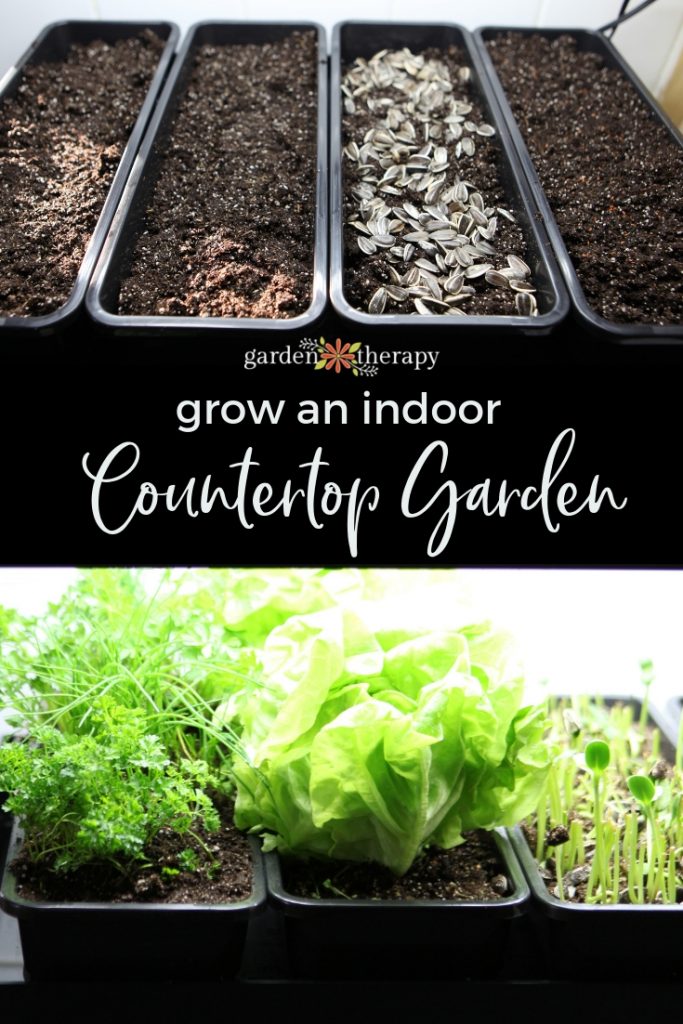
Countertop Gardening Basics
Gardening indoors comes with a unique set of challenges. Plants love fresh air, natural light, and deep soil for their roots. Indoor gardening limits all of these things.
There is no wind to strengthen plant stems, and the humidity levels are not the same as they are outside. The light, no matter how bright your home is, will always be less desirable to plants than being surrounded by natural sunlight. And the soil outdoors, which is packed with microbes and organisms, is a live filtration system and nutritional source.
Indoor pots are filled with sterile soil to keep the critters at bay, but this also means that additional fertilizer must be added. Outdoor plants’ roots can stay dry or reach for moisture as the water disperses throughout a larger expanse than an indoor pot can have. This seems like a lot of challenges, but knowing all this will help you to become a successful countertop gardener.
First of all, let me show you how to set up the Growlight Garden and some of the features that help with countertop gardening.
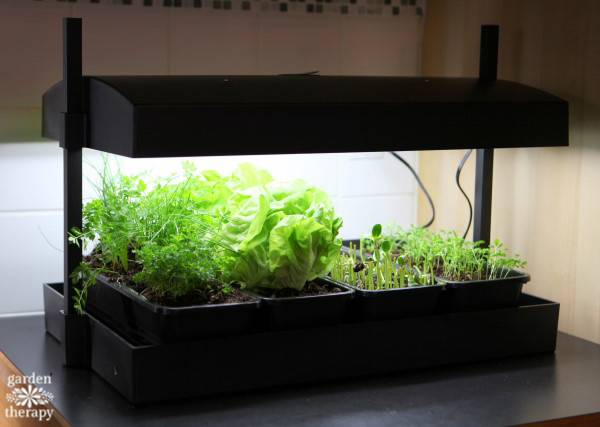
Self Watering Tray
The base of the grow light garden is a large tray with a stand to hold the plant trays. The stand can be used with an absorbent blanket that helps to deliver water on demand to plant roots. You fill the tray with water and set the stand in the tray.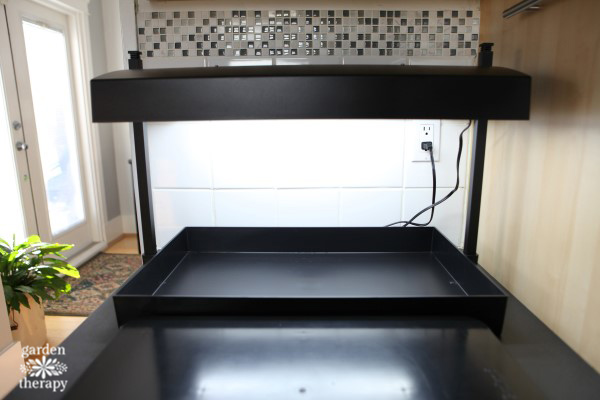
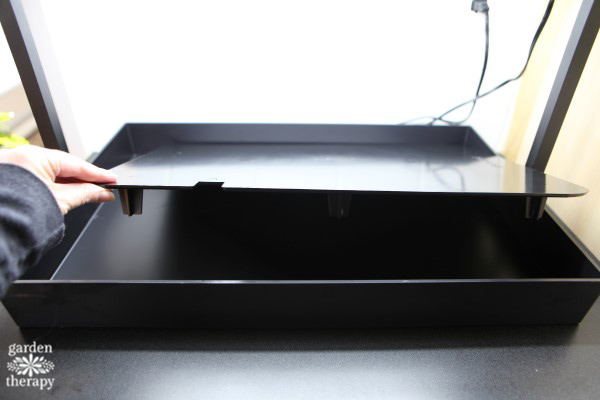
Then, set the blanket on the tray. Cut a hole so that you can refill the tray, and let the blanket touch the water evenly on both ends.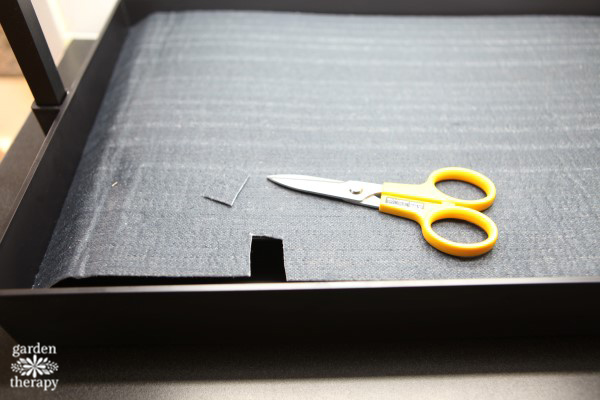
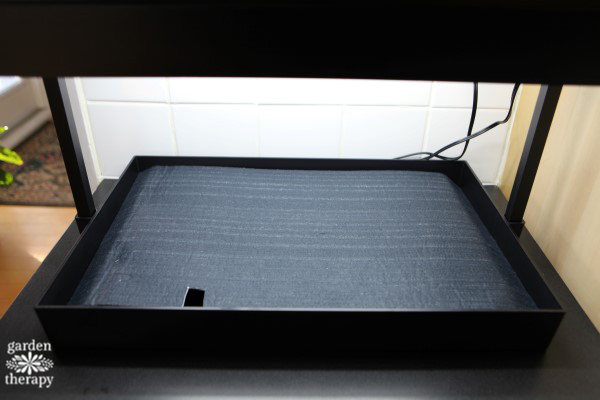
Water will wick up through the blanket, and when you set the plant trays on top the soil will wick up the water, keeping it constantly moist. This is a very effective system, and the soil will be kept moist at all times. It’s important to know which plants enjoy having moist soil and which do not because overly wet roots can also be susceptible to root rot in plants that prefer to have the soil dry out between waterings.
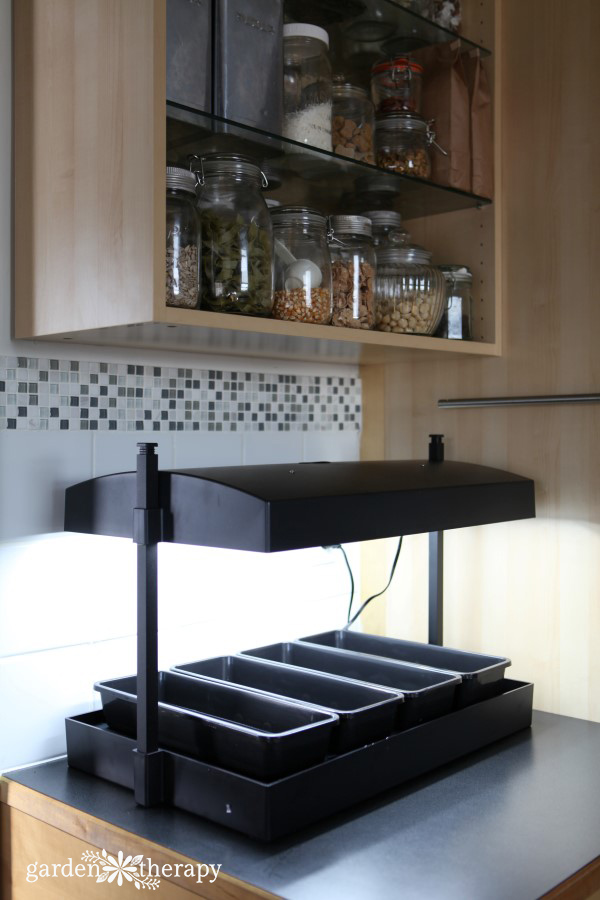
Light Hood
The lights are next in the setup process. Remove the bulbs from the lighting ballast and snap them into the clips. Replace the bulbs once the ballasts are securely in place. This ensures that you can clip the ballasts in place without breaking the bulbs. The light hood is adjustable, so you can choose what height it should be above your plants. Plants will reach for the light if it is too far away, making them leggy and weak. Position the lighting hood just an inch or so above the plants and raise it as they grow.

Countertop Sprouts and Microgreens
You can use the Growlight Garden to grow a fast and healthy supply of fresh greens for your family. Fill the trays with moist seedling starter soil mix and then sprinkle a generous amount of seeds on the top of the soil. You want to cover the soil with a lot of seeds so that you have a lot of sprouts or microgreens to eat. Use seeds meant for sprouting, as they are often sold in bulk and can go much further than a seed packet meant for planting. In my garden, I have planted chervil, a mesclun salad mix, and sunflower seeds. As you can see, it produces different sizes of sprouts and microgreens that can be harvested at different times.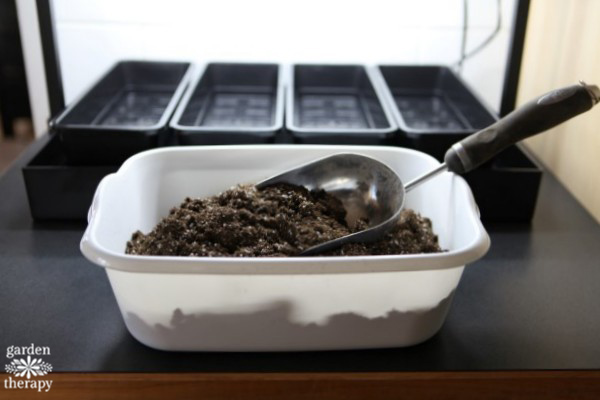
The light doesn’t need to be turned on until the seeds sprout, and then it should be lowered to just above the seed leaves.
Harvest sprouts by cutting them with clean scissors and then washing them in a salad spinner. Add more seeds to fill in spaces and grow more sprouts. You can use the same soil many times over as long as there are no signs of fungus or disease.
Note: when growing sprouts and microgreens in the Growlight Garden, do not use the watering mat. Instead, mist the soil daily to keep the top inch of soil moist. This will allow the seeds to germinate but not create so much moisture that the seedlings become susceptible to damping off, a fungal disease.
Countertop Kitchen Garden
There are two ways to grow herbs and salad greens right on your counter to be freshly harvested at mealtime. 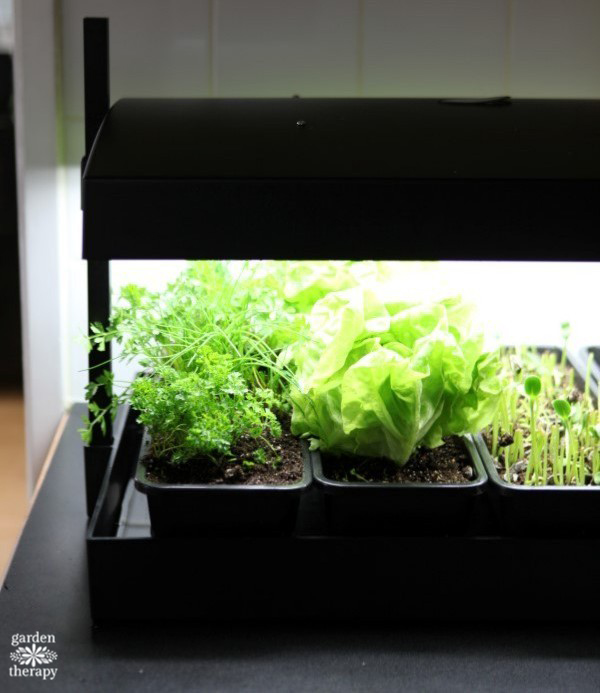
The first method is similar to the sprouting method, although you will plant lettuce and herb seeds in the trays less densely. Allow the seeds to grow into cut-and-come-again spring greens. Cut-and-come-again will grow back from the roots after you harvest small sections of them. You can also reseed any areas that are looking sparse.
The second method is to plant herb and lettuce starts from a local nursery in the trays. This gets you larger plants more quickly, but it is a more expensive option. In this case, you will want to use the moisture blanket to keep the soil moisture level regulated.
Countertop Seed Starting
Starting seeds for the outdoor garden is much like sprouting, although you will plant the seeds much less densely.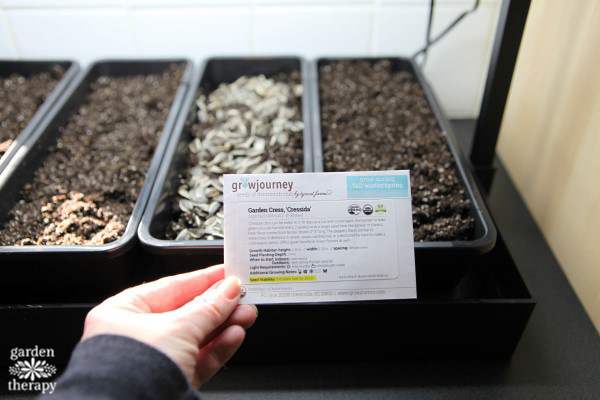
Fill the trays with indoor seedling mix and space out the seeds as per the instructions on the seed packet. Label the seeds so you know which ones they are when they move out to the garden or into larger pots.
Again, don’t use the moisture blanket but spray the surface of the soil daily to keep the seedlings moist. Turn on the lights when the seedlings emerge and keep the light just an inch above the top of the seedlings as they grow.
When the seedlings are ready to be moved outdoors according to the package instructions, move them outside for just a few hours at first and gradually increase their time outside. This “hardening off” process allows the seedlings to acclimate to the outdoors before transplanting them in the garden.
Rooting Cuttings on the Countertop
This is where the moisture blanket comes in handy. Instead of rooting cuttings in water, you can add them to a sterile seedling mix in the trays and set them on the self-watering mat. This will keep the soil wet and allow the stems to root quickly indoors without needing to watch them carefully.
Countertop Plant Nanny
More often than not, I have a gardening project on the go when I leave for vacation. I’m accustomed to losing some plants whenever I go away, but this year I think that will change! I can move all of my sensitive plants to the Growlight Garden, and the self-watering feature will allow the plants to regulate their water supply. In addition, I’ll put the lights on a 12-hour timer so that they will receive equal light and dark each day.




Greens, greens and more greens! I eat them every day in eggs, smoothies, salads, soups, sandwiches, pizza…can’t get enough.
I would grow the herbs I usually use (parsley, basil and rosemary) but would also like to try lavender, for some reason I’m never successful keeping lavender alive for more than few months. Also would try to root cuttings from my beautiful 15 year old gardenia.
I would grow herbs and start seeds for various flowers